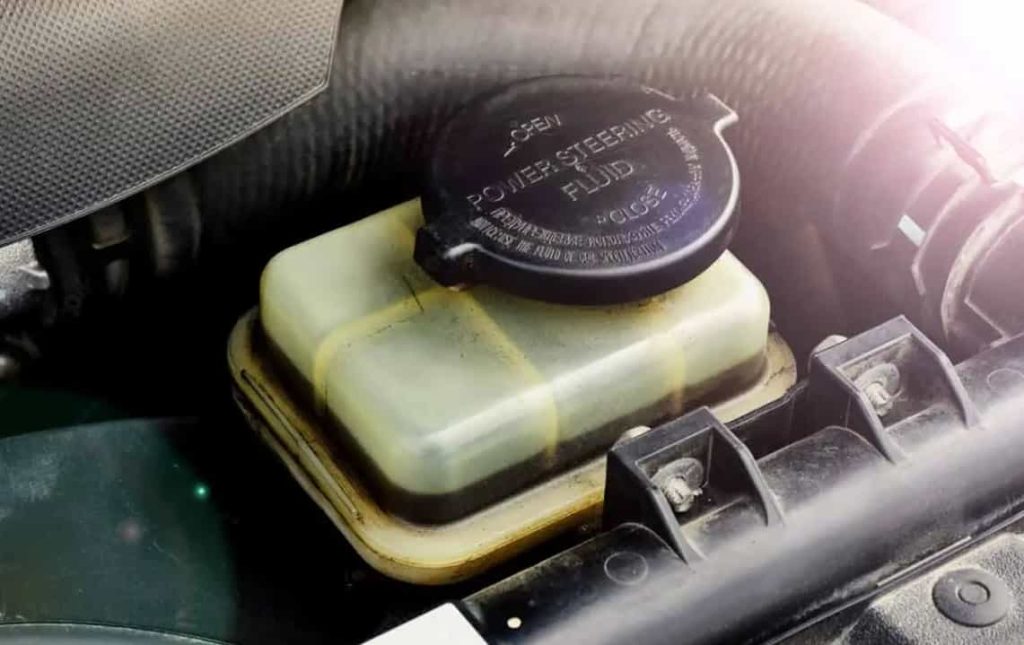Many people ask the question – can you mix old and new power steering fluid?
Now, it is common to assume that there is nothing wrong with this. After all, the power steering fluid is not exactly something that most drivers put much thought on. However, there are certain things to know before you go right ahead and mix them.
Basically, you should be okay with mixing and matching types and brands of power steering fluids… Except for one important thing. These need to meet similar characteristics and standards. Yet, it is still advisable to use just one type of power steering fluid for best results and to put your mind at ease.
So, if you are thinking about this question yourself and wanting to make sure there is no issue with what you want to do, keep reading to learn more.

Can You Mix Old And New Power Steering Fluid?
As we have stated earlier, it is not exactly highly recommended to mix power steering fluids. You may be fine with combining them, yet it is more ideal to avoid doing so. This way, you can prevent issues with your vehicle.
For example, if you need to replenish your power steering fluid, you need to apply only the right amount. If you put too much, this runs the risk of creating air bubbles or foaming. Furthermore, this can result in unwanted sounds and could even reduce your system’s efficiency. Therefore, steering can be compromised when there is not enough fluid.
Additionally, you need to ensure the right power steering fluid in your vehicle. The fluid type largely depends on the model and make of your vehicle. You cannot use just about any type or fluid in your system. So, if you are uncertain about the power steering fluid to use, you need to either consult your mechanic to check what is ideal for your vehicle or read your owner’s manual. You should be able to get the accurate information you need.
Your vehicle equipped with power steering uses hydraulic fluid pressure in allowing you to turn the wheel. Then, there is a pump generating tension, and the hoses send power steering fluid to your steering gear.
In addition to this, there are some vehicles with belts coming from the engine, and this operates your pump. Your steering gear has a piston, which amplifies pressure sent to your wheel, and this ensures a manageable steering,
If there is a tight turning radius and there is a high rolling resistance of your tires, your power steering system helps greatly in such conditions. This is why you should have an easier time steering even at a low speed.
Now, your power steering system requires the right level and type of power steering fluid to operate well. Most automobile manufacturers do not recommend changing your power steering fluid until you have reached the 50,000 mile mark. However, there are some that advise this.
There are times when you can do away with a more frequent change of oil if you constantly drive on rough roads, heavy traffic, or if you tow a trailer. Furthermore, your steering may feel spongy, and you may notice certain noise such as whining and grinding as you rotate. Therefore, if these issues arise, you would have to change your power steering fluid.
Some mechanic shops include draining of the power steering fluid as one of their services for preventative maintenance purposes. This helps in eliminating old fluid and then replenishing it with new one. But this is also not essential unless there are steering issues experienced.
If you plan on doing this yourself, you can most definitely go right ahead with the right tools. For example, you will use a catch basin, two quarts of the right type of power steering fluid for your vehicle, and some rags. In case there is no drain pin in your power steering tank, you will need to get a turkey blaster or a syringe as an alternative.
Start by locating your power steering reservoir. It is usually located to the front of your engine compartment. Pull the cap off and be sure to secure it in a place that is easy to find.
Next, locate your power steering pump, which is on the passenger side’s front. Follow your high-pressure hose to the reservoir. You will need to flush through the hose. Moreover, the reservoir is where return lines can be found. But you do not need to flush the line since fresh liquid should circulate once you turn your ignition key.
Be sure to place your catch basin right under your power steering tank’s high pressure hose connection. Using pliers, you can unfasten your hose clamp and detach the hose. But in the event of a fluid leak, you need to put the hose right back and secure it with a hose clamp. Having someone to help you in this step is ideal as it will make things easier.
Once you have disconnected your hose, place a finger over the end and have another person start your engine. You will notice the pipe starting to leak the fluid once after activating the power steering pump. As it becomes close to depletion, turn the engine off and reconnect your hose.
Make it a point to secure your hose clamp and examine the power steering fluid level to ensure its optimal amount. You will have to do this constantly until the old fluid has been removed thoroughly.
At this point, you should be able to replenish with new power steering fluid.
Read More: Can You Mix Green And Orange Antifreeze? Important Things You Never Knew!
Final Word
Overall, it should be okay to mix power steering fluid, but it is not something we advise. Some risks may occur, especially if the old and new power steering fluid are not compatible. So, better flush the old one before putting a new one to avoid any issues with your vehicle’s power steering system.